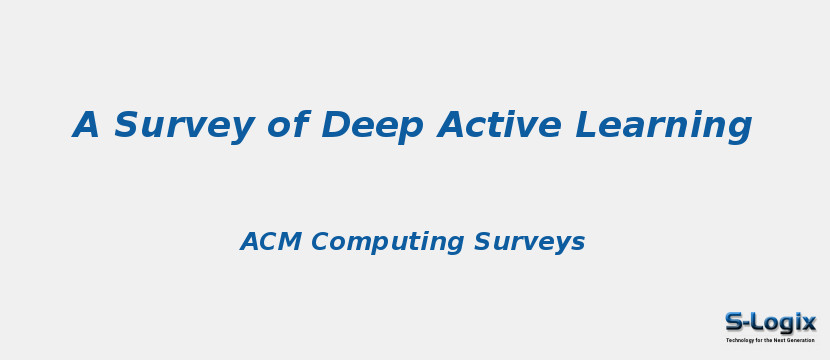Research Area: Machine Learning
Active learning (AL) attempts to maximize a model’s performance gain while annotating the fewest samples possible. Deep learning (DL) is greedy for data and requires a large amount of data supply to optimize a massive number of parameters if the model is to learn how to extract high-quality features. In recent years, due to the rapid development of internet technology, we have entered an era of information abundance characterized by massive amounts of available data. As a result, DL has attracted significant attention from researchers and has been rapidly developed. Compared with DL, however, researchers have a relatively low interest in AL. This is mainly because before the rise of DL, traditional machine learning requires relatively few labeled samples, meaning that early AL is rarely according the value it deserves. Although DL has made breakthroughs in various fields, most of this success is due to a large number of publicly available annotated datasets. However, the acquisition of a large number of high-quality annotated datasets consumes a lot of manpower, making it unfeasible in fields that require high levels of expertise (such as speech recognition, information extraction, medical images, etc.). Therefore, AL is gradually coming to receive the attention it is due.It is therefore natural to investigate whether AL can be used to reduce the cost of sample annotation while retaining the powerful learning capabilities of DL. As a result of such investigations, deep active learning (DeepAL) has emerged. Although research on this topic is quite abundant, there has not yet been a comprehensive survey of DeepAL-related works; accordingly, this article aims to fill this gap. We provide a formal classification method for the existing work, along with a comprehensive and systematic overview. In addition, we also analyze and summarize the development of DeepAL from an application perspective. Finally, we discuss the confusion and problems associated with DeepAL and provide some possible development directions.
Keywords:
Deep Learning
Active Learning
Author(s) Name: Pengzhen Ren , Yun Xiao , Xiaojun Chang , Po-Yao Huang , Zhihui Li , Brij B. Gupta , Xiaojiang Chen , Xin Wang
Journal name: ACM Computing Surveys
Conferrence name:
Publisher name: ACM
DOI: 10.1145/3472291
Volume Information: Volume 54,Issue 9, Article No.: 180, pp 1–40
Paper Link: https://dl.acm.org/doi/abs/10.1145/3472291
